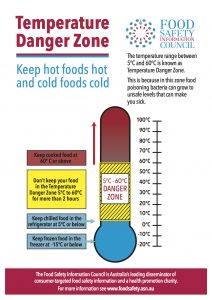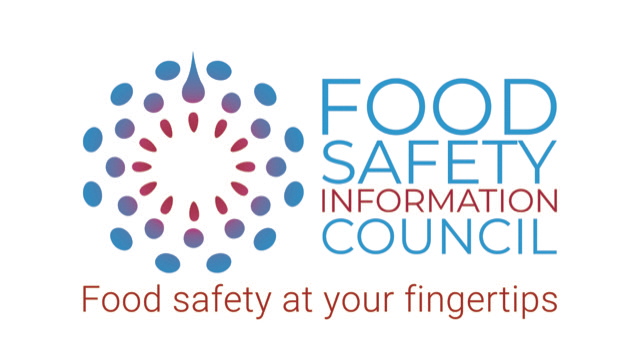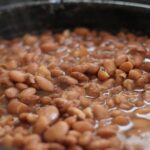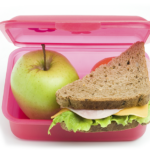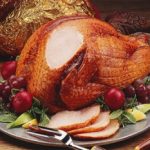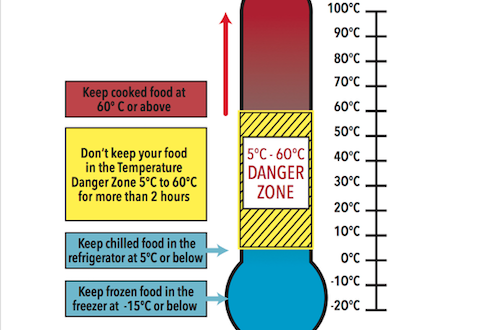
The temperature range between 5°C and 60°C is known as Temperature Danger Zone. This is because in this zone food poisoning bacteria can grow to unsafe levels that can make you sick.
Keeping cold food cold
Keep your fridge below 5°C. At these temperatures most food poisoning bacteria stop growing or they grow slowly. Use a fridge thermometer to check that the temperature stays around 4 to 5°C. Also make sure you have enough fridge space as fridges won’t work properly when they are overloaded or when food is packed tightly because the cold air cannot circulate.
If you are running out of room in your fridge, remove foods that are not potentially hazardous, such as jams, pickles, vinegar-based dressings, bottled or canned drinks. The temperature of these foods is not critical for safety and they can be kept cool in insulated containers with ice or cold packs.
Freshly cooked food, not for immediate consumption, should be cooled to below the danger zone as quickly as possible. Divide food into small shallo containers and place in the fridge or freezer as soon as it stops steaming.
Keeping hot food hot
Hot food needs to be kept and served at 60°C or hotter. If you are keeping it warm for someone put it in the oven at 60°C or at 100°C if that is as low as your oven will go.
Two-hour/four-hour rule
Use the two-hour/four-hour guide below to work out what action you should take to avoid food poisoning if potentially hazardous food is held at temperatures in the danger zone.

Follow these 7 simple tips to keep your food out of the Temperature Danger Zone
- Plan ahead. Don’t over cater as the greater the quantity of food you prepare the harder it is to keep it hot or cool enough until it is served. If you are catering for a lot of people prepare food as closely as you can to the time you will serve it.
- Keep your fridge at or below 5°C. Use a fridge thermometer to check that the fridge temperature stays around 4 to 5°C. Also make sure you have enough room in the fridge because if the food is packed tightly the cold air cannot circulate.
- Check the storage instructions. Read the label on packaged food to see if it needs to be stored in the fridge or freezer, many unrefrigerated items may need to be refrigerated once opened.
- Keep hot food at or over 60°C. Hot food needs to be kept and served at 60°C or hotter. If you are keeping it warm for someone put it in the oven at 60°C (or at 100°C if that is as low as your oven will go).
- Divide food up to cool quickly. Freshly cooked food, not for immediate consumption, should have the temperature reduced as quickly as possible. Divide the food into containers in small portions and put it into the fridge or freezer as soon as it stops steaming. You can cool food faster if you place the pot in a sink of cold water and stir it, replacing the water from time to time.
- Keep food on the move cool. If you are transporting perishable food around such as: refrigerated or frozen shopping, your (or your child’s) lunch or goodies for a BBQ or a picnic always use a cooler bag and add a frozen block or drink to keep things cool.
- If in doubt throw it out. If perishable food has been in the temperature danger zone for 2 to 4 hours consume it immediately. After 4 hours throw it out.
Download our temperature danger zone poster
